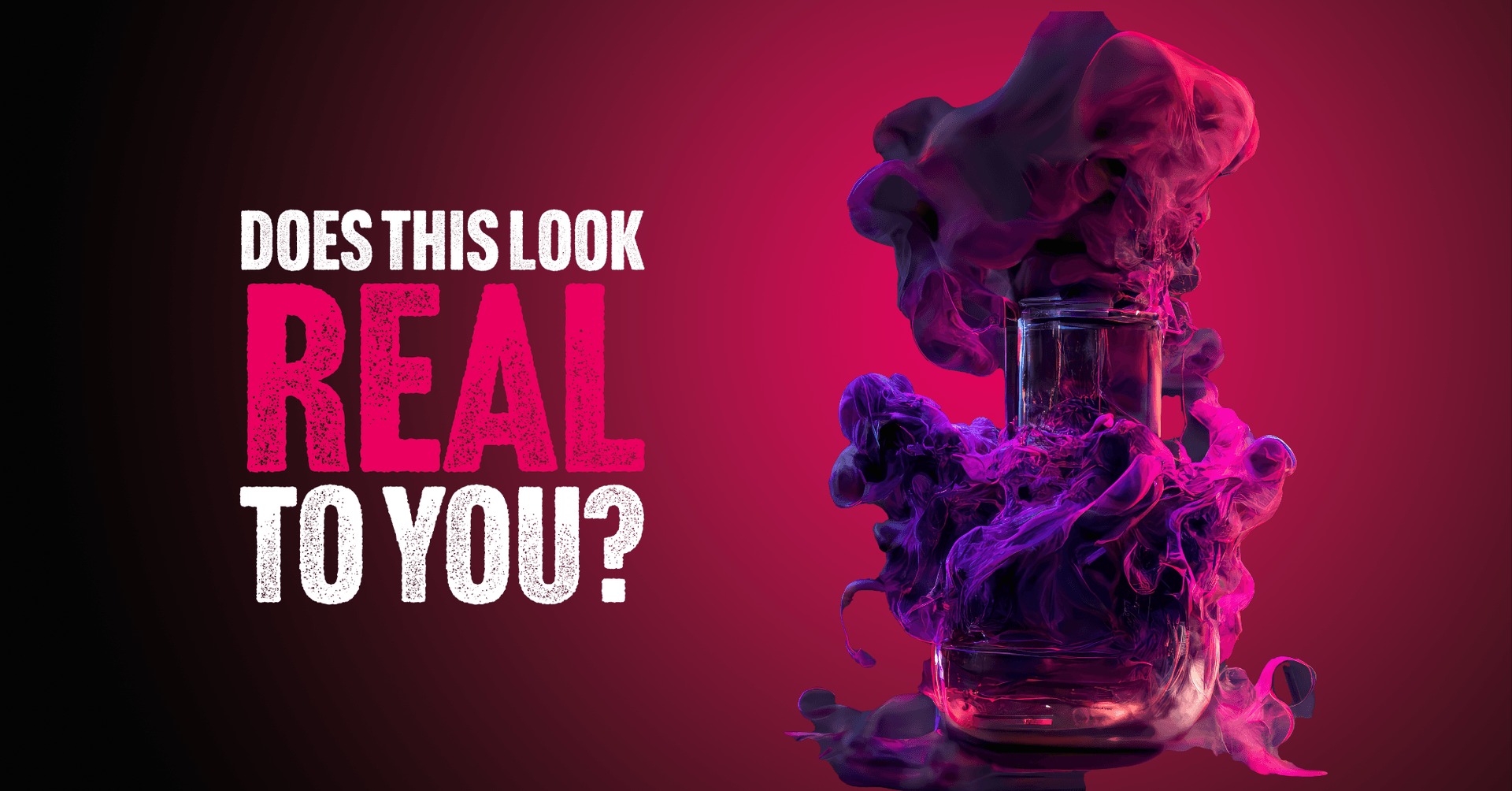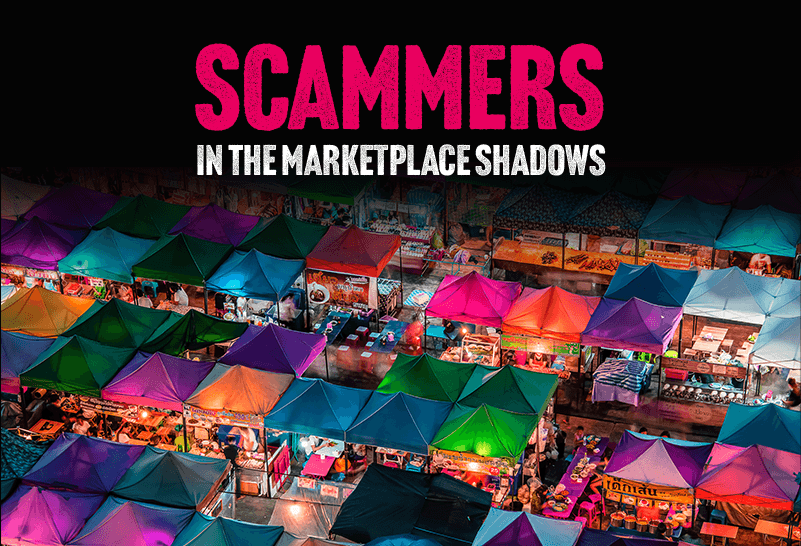- Privacy
- Protect
Is this counterfeit?
Everyone loves a bargain! But when something seems too cheap or too good to be true, your radar should be up, telling you to be cautious about where it’s coming from.By Rightly
7 min read

Counterfeit products proliferate, especially online. They range from high-end consumer luxury goods such as watches, perfumes or leather goods, to business-to-business products such as machines, chemicals or spare parts. Consumer products such as toys, pharmaceuticals, cosmetics and specialist food items are all subject to counterfeiting.
These kinds of scams are common. The odds are that you’ve seen a counterfeit product or knockoff of some kind. Perhaps you’ve purchased one yourself in a shop or other location, or you’ve bought something online and had it shipped to your home, only to find out later it wasn’t the real thing.
Counterfeit goods are products, often of inferior quality, sold under another company’s brand. You may have seen street sellers apparently selling, for example, Chanel bags or Gucci sunglasses and they’ll swear to you that they’re genuine. And sometimes these fakes are very good, making it hard for people to spot that they are being ripped off.
Cosmetic cosmetics
Fake cosmetics have become a major problem. The lure of discounted prices and brand names has made it easier for criminals to produce and distribute fake cosmetics to unsuspecting consumers. These fake cosmetics can not only be dangerous for your skin and health but also pose a threat to the economy and the genuine manufacturers. They can contain anything from paint stripper, rat poison and lead and can cause allergic reactions, skin irritation, swelling, rashes, burns and even longer term health problems.
Sadly, it’s often the genuine brands that face negative publicity when issues occur. The industry is focussed on tackling fake products and are working more together to improve communications with consumers to help them to identify the signs of a fake.
Can you avoid buying fake cosmetics?
Here are some tips to help you:
Buy from reputable sources. Always purchase cosmetics from a trusted source, such as the brand's official website, authorised retailers, or reputable online stores. Avoid buying from unknown online sellers or unauthorised retailers.
Check the packaging. Examine the packaging carefully for any signs of tampering or suspicious labelling. Look for any spelling or grammar errors, or any discrepancies in the logo or packaging compared to genuine products. Are there branding or packaging inconsistencies? If there are, be aware it may not be a genuine product.
Check the price. If the price seems too good to be true, it probably is. Be wary of deeply discounted prices.
Check the ingredients. Research the ingredients in the product and compare them to the genuine product's ingredients list.
Fake websites
In today’s digital world, there are many scammers who create fake websites and brands in order to trick unsuspecting consumers. They can be difficult to spot. The fraudsters can be extremely cunning and use their expertise to create convincing websites.
Many counterfeit goods get sold online through fake websites. Sometimes these sites are very convincing, using official logos, typography and colours. But, with a little care you can check out whether the website is the real deal, or not. Here are are few tips:
Double-check the domain name
Many fraudulent websites use a domain name that references a well-known brand or product name. They make it seem similar to the real website, but if you check carefully, you may see that it is not the genuine brand’s site. For example, if you’re looking for bargain trainers and you’re on site called discountnike.com, you may find that it has nothing at all to do with nike.com
Also, you should also be cautious of domains that end in .net or .org. Consumer brands usually don’t use these domain extensions and they may have been acquired by scammers.
Too good to be true?
It’s an old adage, but if something seems too good to be true then it probably is. Scam websites use low prices to attract shoppers looking for bargains to quickly sell fake, counterfeit or even non-existent items.
Don’t get rushed
Scammers often use pushy language or other tools such as a countdown timer to pile pressure on the consumer so that they’ll act without thinking things through.
Don’t pay by bank transfer
If you’re asked to pay for something online via a bank transfer, don't do it, because with this payment method there’s not much to be done to get your money back from a scammer.
But, when you buy an item that turns out to be fake or non-existent with a credit or debit card, there are some rights available that at least give you a chance to get your money back.
Browse the website
Scam sites often use poor English and make basic grammar or spelling mistakes. It’s worth visiting the homepage or the ‘About us’ pages to take a look at the information provided.
Also, watch out for pixelated images or graphics, and old logos or branding from scammers attempting to imitate a genuine brand.
Can you get in touch?
Check that the website lists contact information and that it’s genuine. Legitimate companies typically list how to get in touch and if they don’t, well, it could be a fake.
If the only source of contact on the website is a ‘Contact us’ form, be wary as this could also be an indication of a dodgy website.
Is there a returns policy?
If the company is selling a product online, it should have a shipping and returns policy listed on its website. There should also be the company’s terms and conditions along with a privacy policy telling you what it will do with your personal data that it collects.
Read online reviews
Check several reviews, ideally across more than one review site. And of course see what people are saying about the company and the site on their socials.
Counterfeit cosmetics and beauty product scams
Skin and hair care, make up, perfumes, oral care, toothpaste, anything that you put on the outside of your body designed to clean, protect, change or condition it, are all considered to be cosmetics.
Before the pandemic, the beauty industry was one of the few sectors where in-person sales still significantly outnumbered those made online. But there has been a shift with new technologies, such as artificial intelligence and augmented reality, being used to make it easier to purchase products online. Now consumers can even "test" products via smart apps.
As more consumers purchase cosmetics on the internet, a world of new opportunities has opened up for criminals selling fake versions of "hero" products in a bid to profit from the industry’s success.
Safety first
Appearing, online at least, to be identical to the genuine article, buying a fake can be an easy mistake to make. It can be hard to navigate the genuine sellers from the ones that are selling fakes or making false promises. The increase in social media ads also means that criminals selling unsafe, fake or misleading cosmetic and beauty products are only a click away.
It’s criminal
Counterfeit products pose several problems. They might not meet safety and environmental regulations, which could lead to health and safety concerns. The sale of some counterfeit products can even be linked to funding organised crime or terrorism.
What should you do?
If you come across counterfeit goods, especially if you have been taken in by a scam involving them, here are some things you should do:
Report it
You can report the seller to Trading Standards or report the seller for fraud. Trading Standards might take legal action against the seller, but they can’t help you to get your money back, even though you have the right to a refund if you’ve bought something that’s fake or counterfeit.
Get a refund
If you bought before 1 October 2015, you have the legal right to a refund within a ‘reasonable’ time of you buying the item. Although the law isn’t very specific on how long you have, you should be entitled to a refund within the first couple of months..
If you bought on or after 1 October 2015, you’re legally entitled to a full refund on fake goods within 30 days of paying for them. If it’s over 30 days, the seller can provide you with a real version of the item. But if they can’t, then you have a right to a refund up to six months after you paid for it.
What if the seller refuses to give you a refund?
Sometimes sellers argue that items were obviously fake because they were very cheap. They can say you must have known it wasn’t the real thing and use that as a reason not to give your money back. However, they’re breaking the law by selling fake items and your legal rights still apply.
I paid by debit card
Contact your bank and say you want to use the ‘chargeback scheme’.
I paid by credit card
If the item costs less than £100, you should contact your credit card company and say you want to use the ‘chargeback scheme’.
If the item costs between £100 and £30,000, contact your credit card company and say that you want to make a ‘section 75’ claim to get your money back.
I paid by PayPal
Use PayPal’s online Resolution Centre to report your dispute. You must do so within 180 days of paying.
Report the seller for fraud
In addition to reporting the seller to Trading Standards, you can also report them to Action Fraud. If you do, they will register the trader on the national fraud database.
Reduce the odds
People get targeted by scammers who may try to sell them fake cosmetics or other counterfeit goods. The scammers are able to target you because they have some part of your personal data, and they probably got it from a data breach where hackers stole the personal information from a legitimate company.
The best way to avoid having your data stolen in a data breach is to make sure it’s not stored amongst any data that gets stolen. You can get your data deleted from any company that no longer needs it by using our Rightly Protect service. It’s quick, simple and free and will tell you just who has your data and give you the chance to instruct them to completely erase it if that’s what you want to do.
Related Articles
- Blog
5 min read

Scammers in the marketplace shadows
Online marketplaces are a great way for buyers and sellers to interact and trade goods and services for money in a convenient, streamlined place with little or no friction. But of course, where there are transactions or systems to be exploited, you can bet a scammer has figured out a way to capitalise on it. And they are coming after you, so best be aware of how they’ll show up.
- Blog
4 min read

January sales or January scams
January is a traditional period of sales, attracting bargain hunters all over the UK looking for a great deal on that sought after item. But scammers can see us coming. It’s becoming a minefield out there, trying to navigate to a genuine bargain amongst all the trickery and scams put in our way.